Common indoor hanging plants are a delightful addition to any home, offering a touch of nature and tranquility to your living space. These plants not only enhance the aesthetics of your home but also provide numerous benefits, making them a must-have for any plant enthusiast.
From lush ferns to trailing vines, there’s a wide variety of indoor hanging plants to choose from, each with its unique charm and care requirements. Whether you’re a seasoned plant parent or a beginner looking to add some greenery to your home, this comprehensive guide will provide you with all the information you need to select, care for, and display your indoor hanging plants.
Common Indoor Hanging Plants
Hanging plants are a great way to add life and greenery to any room. They can be used to create a focal point, add a touch of color, or simply purify the air. There are many different types of hanging plants to choose from, each with its own unique characteristics.
Here is a comprehensive guide to some of the most popular indoor hanging plants:
Pothos (Epipremnum aureum)
- Botanical Name:Epipremnum aureum
- Origin:Solomon Islands
- Characteristics:Pothos is a fast-growing vine with heart-shaped leaves that come in a variety of colors, including green, yellow, and white. It is a very easy plant to care for, making it a good choice for beginners.
- Care Requirements:Pothos prefers bright indirect light and well-draining soil. It should be watered when the top inch of soil is dry to the touch.
Spider Plant (Chlorophytum comosum)
- Botanical Name:Chlorophytum comosum
- Origin:South Africa
- Characteristics:Spider plants are known for their long, arching leaves that produce plantlets, or baby spiders. They are a very easy plant to care for, making them a good choice for beginners.
- Care Requirements:Spider plants prefer bright indirect light and well-draining soil. They should be watered when the top inch of soil is dry to the touch.
String of Pearls (Senecio rowleyanus)
- Botanical Name:Senecio rowleyanus
- Origin:South Africa
- Characteristics:String of pearls is a unique plant with trailing stems that are covered in small, bead-like leaves. It is a slow-growing plant, but it can reach up to 2 feet in length.
- Care Requirements:String of pearls prefers bright indirect light and well-draining soil. It should be watered sparingly, allowing the soil to dry out completely between waterings.
Air Plant (Tillandsia spp.)
- Botanical Name:Tillandsia spp.
- Origin:Central and South America
- Characteristics:Air plants are unique plants that do not need soil to grow. They absorb moisture and nutrients from the air through their leaves.
- Care Requirements:Air plants prefer bright indirect light and high humidity. They should be misted with water every few days.
Staghorn Fern (Platycerium bifurcatum)
- Botanical Name:Platycerium bifurcatum
- Origin:Australia
- Characteristics:Staghorn ferns are unique plants that have two types of leaves: sterile leaves that form a flat, shield-like base, and fertile leaves that are upright and deeply lobed.
- Care Requirements:Staghorn ferns prefer bright indirect light and well-draining soil. They should be watered when the top inch of soil is dry to the touch.
Benefits of Incorporating Hanging Plants into Home Decor
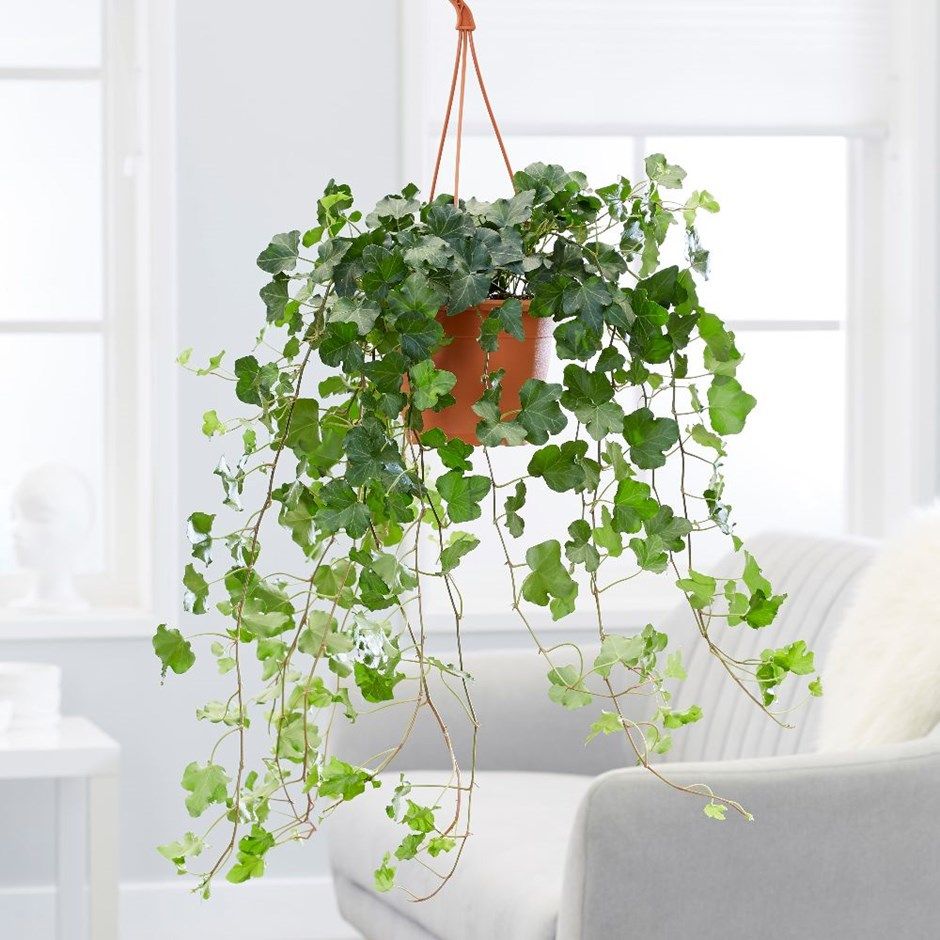
Hanging plants have become increasingly popular in interior design, offering both aesthetic and functional benefits. They can transform a space, adding a touch of nature and creating a sense of tranquility.
Air Purification, Common indoor hanging plants
Hanging plants are natural air purifiers, removing toxins from the air. Studies have shown that certain plants, such as spider plants and peace lilies, can effectively reduce levels of formaldehyde, benzene, and other harmful pollutants.
Common indoor hanging plants are a great way to add life and color to your home. They can be used to create a variety of looks, from lush and tropical to modern and minimalist. If you’re looking for a way to add some extra height to your space, consider ceiling hanging plants indoor . These plants can be hung from the ceiling or from a plant stand, and they can add a touch of elegance to any room.
Common indoor hanging plants include pothos, spider plants, and ferns.
Stress Reduction
Surrounding oneself with plants has been shown to reduce stress levels and improve mood. The presence of greenery can create a calming atmosphere, promoting relaxation and well-being.
Ambiance Enhancement
Hanging plants can create a variety of visual effects, from dramatic focal points to subtle accents. They can be used to draw the eye upwards, creating a sense of height in a room. Additionally, the trailing vines of hanging plants can soften sharp edges and add movement to a space.
Choosing the Right Hanging Plants for Your Space
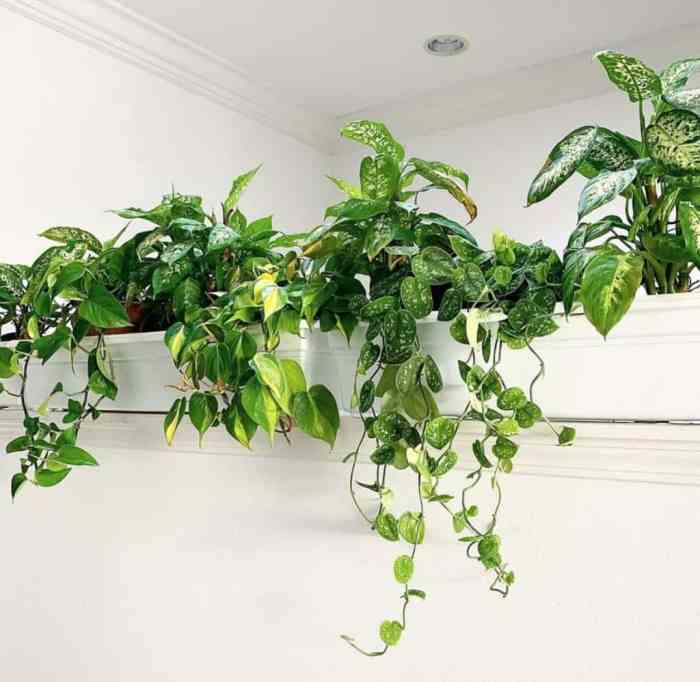
Selecting the perfect hanging plants for your home requires careful consideration of several factors. By understanding your space’s conditions and your personal preferences, you can choose plants that will thrive and enhance your decor.
Light Conditions
Assess the amount of natural light your space receives. Bright, indirect light is ideal for most hanging plants. Consider plants like pothos, spider plants, and ferns if your space has limited light. For areas with ample sunlight, opt for plants like hoyas, succulents, and certain varieties of orchids.
Humidity Levels
Some hanging plants, such as ferns and mosses, prefer high humidity levels. If your space is dry, consider using a humidifier or misting your plants regularly. Other plants, like succulents and air plants, tolerate drier conditions well.
Available Space
Measure the available space for your hanging plants. Consider both the vertical and horizontal dimensions. Choose plants that fit comfortably without overcrowding the area. Smaller plants, such as baby tears or string of pearls, are suitable for limited spaces. Larger plants, like trailing philodendrons or monsteras, can create a dramatic impact in spacious areas.
Decor and Personal Preferences
Consider your existing decor and personal preferences when choosing hanging plants. Match the plants’ foliage, texture, and colors to complement your style. Experiment with different hanging containers to add visual interest. Whether you prefer lush greenery, trailing vines, or flowering varieties, there’s a hanging plant to suit every taste.
Care and Maintenance of Indoor Hanging Plants
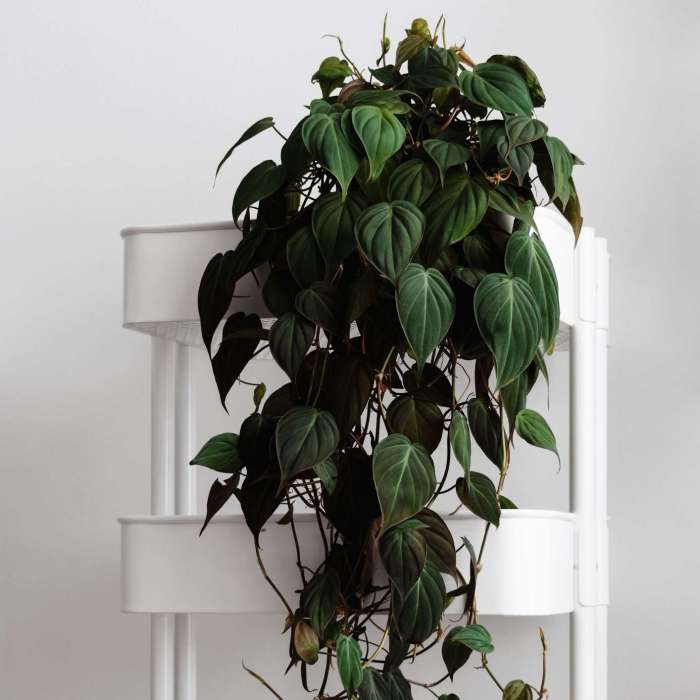
Indoor hanging plants bring a touch of nature and elegance to any home. However, they require proper care and maintenance to thrive. Here’s a comprehensive guide to ensure your hanging plants stay healthy and vibrant.
Common indoor hanging plants like ferns, spider plants, and philodendrons are popular for their ability to thrive in a variety of conditions. For those looking for low-light options, best hanging plants indoor low light include pothos, snake plants, and ZZ plants, which are known for their hardiness and ability to tolerate low light conditions.
Watering
Watering is crucial for hanging plants, as their suspended position can make it difficult for them to absorb moisture from the soil. Water your plants thoroughly when the top inch of soil feels dry to the touch. Avoid overwatering, as it can lead to root rot.
Use room-temperature water and allow the excess water to drain out of the drainage holes.
Common indoor hanging plants, such as pothos and spider plants, bring a touch of greenery to any room. For those seeking a more vibrant display, colorful indoor hanging plants offer a wide range of hues and patterns. These plants, including variegated ivy and purple heart, add a splash of color to any space, while still providing the air-purifying benefits of common indoor hanging plants.
Fertilizing
Fertilizing your hanging plants regularly provides them with essential nutrients. Use a balanced liquid fertilizer diluted to half strength during the growing season (spring and summer). Fertilize every two to four weeks, following the instructions on the fertilizer label.
Pruning
Pruning helps maintain the shape and size of your hanging plants. Remove any dead, diseased, or yellowing leaves or stems. Prune overgrown stems to encourage bushier growth. Use sharp, clean shears to make precise cuts.
Common Problems
Hanging plants may encounter various problems, including:
- Brown or yellow leaves:This could indicate overwatering, underwatering, or lack of nutrients.
- Wilting leaves:This can be a sign of dehydration, overwatering, or root rot.
- Pests:Spider mites, aphids, and mealybugs are common pests that can infest hanging plants. Treat infestations with insecticidal soap or neem oil.
Creative Display Ideas for Hanging Plants: Common Indoor Hanging Plants
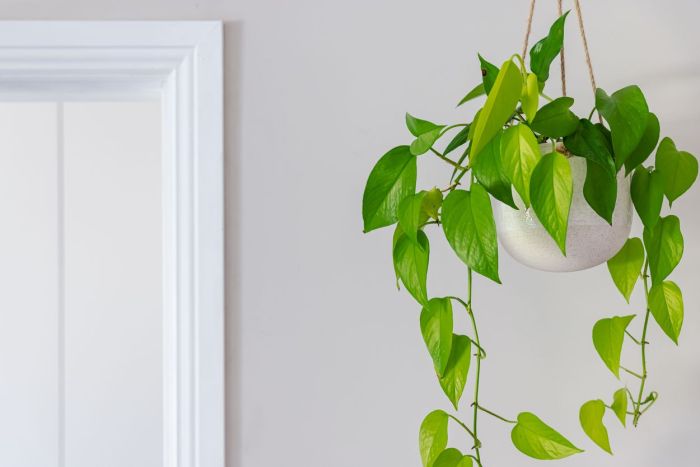
Hanging plants can transform any space into a lush oasis. With a little creativity, you can display them in unique and inspiring ways that enhance the beauty of your home decor.
From macrame hangers to shelves and vertical gardens, there are endless possibilities for showcasing your hanging plants. Here are a few ideas to get you started:
Macrame Hangers
- Macrame hangers add a touch of bohemian flair to your hanging plants. They come in a variety of designs and colors, so you can find one that matches your style.
- To hang your plant in a macrame hanger, simply insert the pot into the hanger and adjust the cords to create the desired length.
Shelves
- Shelves are a great way to display hanging plants at different heights. You can use floating shelves, wall-mounted shelves, or even corner shelves.
- To create a more dramatic effect, group several hanging plants together on a shelf.
Vertical Gardens
- Vertical gardens are a great way to add greenery to small spaces. They can be created using a variety of materials, such as pallets, chicken wire, or even old picture frames.
- To create a vertical garden, simply attach your hanging plants to the frame or structure. You can also use hooks or wire to create different levels.
Living Walls
- Living walls are a stunning way to bring the outdoors in. They are essentially vertical gardens that are attached to a wall.
- To create a living wall, you will need to install a frame or structure on the wall. You can then attach your hanging plants to the frame using hooks or wire.
Last Point
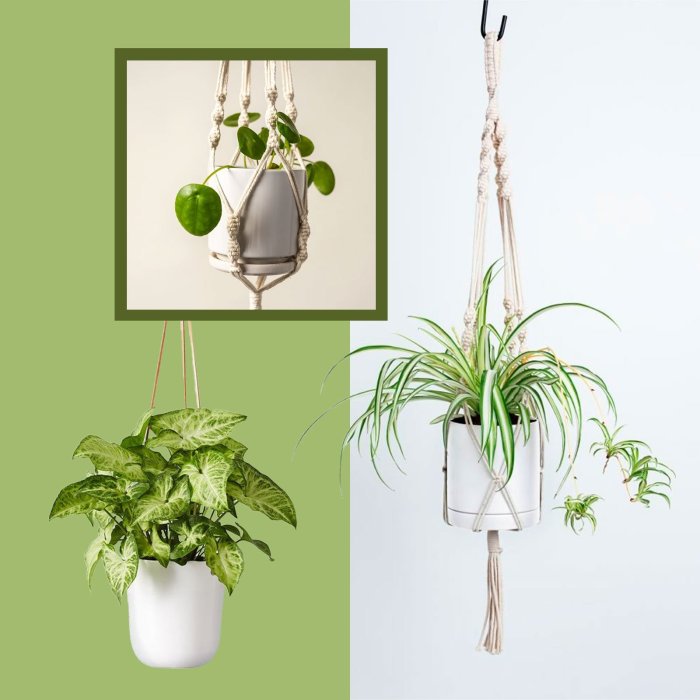
Incorporating common indoor hanging plants into your home decor is a fantastic way to create a welcoming and serene atmosphere. These plants bring a touch of the outdoors in, purify the air, and reduce stress levels. With proper care and maintenance, your indoor hanging plants will thrive and bring years of joy and beauty to your living space.
FAQ Summary
What are the most popular types of indoor hanging plants?
Some of the most popular indoor hanging plants include pothos, spider plants, ferns, and ivy.
How often should I water my indoor hanging plants?
The watering frequency will vary depending on the type of plant and the environment it’s in. As a general rule, water your plants when the top inch of soil feels dry to the touch.
What are some creative ways to display indoor hanging plants?
You can use macrame hangers, shelves, or even create a vertical garden using hanging plants. Get creative and find a way that complements your home decor.